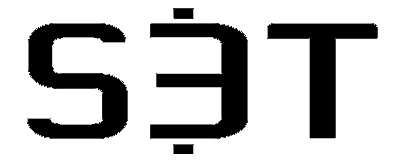🚩6.27.2025 - Tech adoption red flags, TradFi gets crypto, AI stalls learning...

Tools that fade into the background but boost results quietly tend to be the real winners.
🎧 Listen here or Listen on Spotify
This issue in 20 secs:
📢 1. Buzzword Overload? Beware the Hype.
Agentic AI! Ambient AI! Stablecoins! Tokenized X! If the buzzword is the selling point, that's your 🚩 red flag. Learn how to separate real value from empty hype.
🧠 2. Smart Tech Adoption Starts with One Question
What’s the selling point? Tools that fade into the background but boost results quietly tend to be the real winners. 🛠️
📉 3. Economic Storm Signals Are Flashing
The U.S. Leading Economic Index has declined for 6 months straight. 📉 Recession risks are rising as immigration drops and inflation creeps back up. What should leaders do?
💸 4. Traditional Finance Quietly Embraces Crypto
BNY Mellon, Mastercard, and Fiserv are already using stablecoins for speed and savings. 🪙 Don’t let the headlines fool you—crypto is becoming core financial plumbing.
🏘️ 5. Crypto Assets Now Count Toward Your Mortgage
Yes, really. The FHFA is allowing crypto to be included in mortgage applications. 🏡 A signal that digital assets are going mainstream.
🧾 6. ChatGPT Can Write—but Can You Remember What It Said?
MIT study shows LLMs help you produce faster, but not learn better. 📚 Use AI tools wisely—or risk becoming a great prompt writer with a weak grasp of content.
🔍 7. S3T = Your Edge in a Noisy World
Get insight that cuts through the noise. See what’s actually working, what’s overhyped, and how to lead wisely in fast-moving times. 🚀
[perspective]
What is the selling point?
Every day we are bombarded with messages trying to sell us on new technologies: Generative AI! No, no, now it's Agentic AI!, No wait you need Ambient AI, oh but wait there's also Stablecoins! And Tokenized something or others. Get in NOW!
As change leaders - who notice opportunities to make things better, and look for better tools and solutions - this presents a dilemma. How do we know when a new technology or approach is ready for real world usage? And how do we tactfully caution stakeholders or partners who may have gotten too excited for their own good?
As new technologies evolve, one key indicator we should watch is the selling point. What is the selling point for this new tech?
Watching the selling point is helpful because the selling points for new technologies that are truly ready to deliver business value actually sound different than the selling points for new tech that may not be ready yet (or may not be ready ever).
🛑 High Risk - Low Business Value:
- When the selling point is the new tech buzzword itself (as if it's patently obvious that everyone already knows we have to have this), that should be a red flag.
- When the tech buzzword is being used in a way that drives Fear of Missing Out (FOMO), that's also a red flag.
🟡 Moderate Risk - Possible Business Value
- When the selling point is the efficiency or benefits the new tech enables, that's promising.
- When the new tech is "receding" into the background...just part of the machinery that makes for a better system - also promising.
🍏 Lower Risk - More Likely Business Value
- When the selling point is case studies from companies who have successfully realized the efficiencies and benefits by using the new technology, that's a good sign this may be worth exploring.
- You still need to confirm that the use case and benefits have applicability to your situation, but you have the opportunity to learn from another early adopter's experience.
When new tech buzzwords are the selling point, that's an indicator that this technology may not be ready for adoption. When the selling point is the efficiency or benefit that the new tech enables, then that's probably time to explore and consider adoption.
We're going to apply this principle as we look at some of key developments this week, in our content sections below.
[emerging tech]

Does ChatGPT make your brain lazy?
MIT's June 2025 study Your Brain on ChatGPT highlights some possible issues with depending on Large Language Models (LLMs) like ChatGPT to do your homework. The study (full text PDF here) compared the brain activity of 3 groups who were tasked to write essays:
- Group 1: Those who wrote essays using "brain-only" personally known information
- Group 2: Those who wrote essays with the help of search engines
- Group 3: Those who wrote essays using ChatGPT
Over the study's 4 month period, ChatGPT users "consistently underperformed at neural, linguistic, and behavioral levels" in comparison to "Brain-only" participants. The study also found that people in this group were not able to recall or quote their own essay's key points (perhaps a reflection of the fact that instead of writing an essay, they wrote a prompt asking ChatGPT to write it for them).
Which group wrote better essays?
I was curious to understand whether the resulting essays differed in quality and level of acceptability, so went through the paper to see what the authors found. The study asked a group of teachers to grade the essays and also assigned an "AI Judge" to score the papers as well. Interesting results:
- The Teachers rated LLM essays higher in language, structure and accuracy, saying they "often developed a topic more in-depth than others" but rated them lower on content and uniqueness, saying they seemed "soulless." p62.
- Teachers provided a wider range of scores than the AI Judge. See p65. This makes sense: the AI Judge has a bigger "context window" for comparing larger chunks of text against criteria baselines more quickly than a human teacher can.
LLMs: Good for Productivity, Not so Good for Education
The takeaway from this paper seems to be that using an LLM can allow a person to quickly generate a passable essay, but the process of doing so may not do much to boost that person's own learning and intellectual development.
A lingering question regarding the LLM Group: Was brain activity of this group being reallocated from cognitive learning and analysis to a different kind of mental activity, like writing better prompts, and evaluating the outputs from the LLM?
Maybe, say the authors in their closing summary (p.106): "AI assistance in writing may free up cognitive resources (reducing memory load) and allow the brain to reallocate effort toward executive functions." This warrants further study.
Takeaway for Educators and Mentors: know what LLMs can and can't do
Many educators as well as workplace learning specialists are wrestling with whether to allow LLMs or not. Clearly more studies are needed to dig into this further.
But what seems to be clear so far is that the question of whether or not to use LLMs hinges on what you are trying to achieve:
- If you are trying to learn and integrate a subject domain, LLMs will not help you.
- If you are trying to execute quickly, to produce a required deliverable, LLMs can do that. But you will still need someone with domain expertise to determine whether it satisfies the requirements.
In other words teach students (and workplace learners) to be clear on their objective, and then to choose what tools and approaches best support their objective.
Also worth study: ChatGPT Dependency Disorder - a review of the increasing reliance on AI-driven conversational agents in healthcare, and the importance of keeping human's accountable and in control of healthcare processes.
[macro-economics]

Leading economic indicators are in persistent decline
Full Access Members: See the S3T Economic Dashboard for the Top 500+ US & International real-time economic indicators.
The Conference Board's Leading Economic Index (LEI) dropped again in May - the indicator has now declined for 6 months in a row. Sustained declines like this one are typically considered recession predictors though a look at the Conference Board's chart below suggests that sometimes the Leading Index drops while the Coincident Index may continue to rise (see per 2020-present below)

The Federal Reserve also has lowered its 2025 GDP forecast from 1.7% to 1.4% while increasing its inflation forecast from 2.8% to 3.1%.
Stephen Roach says the world economy is nearing its "stall speed" in his new piece Why War and Tariffs are a Double Shock to the World Economy.
Two coinciding factors: Global Debt and Sharp declines in immigration
Developing countries around the world are struggling under crushing loads of debt - that require them to spend more and more of their GDP on servicing their debt instead of taking care of their own domestic needs. External debt for developing countries hit a new record in March 2025.

In addition, immigration declines are happening not just in the US but across the West where politicians pledged to cut immigration and raise living standards. As the Economist notes, immigration has been cut sharply but living standards are also declining - some reasons why:
- Immigration increases demand for goods and services, which drives employment.
- Immigrants also tend to take jobs that non-immigrants do not want, allowing their hosts to move into more lucrative professions.
- Immigrants provide cost effective labor for food and housing industries which drives more affordable housing and food.
If we love free enterprise capitalism and economic growth, we should realize it's in our best interest to have as many people to join the economy as possible. As described in this Immigration explainer, a lot of the ills associated with immigration have their root cause in the fact that US immigration is an overly long, dysfunctional and incredibly inefficient process. The economically expedient thing to do would be to overhaul and shorten the process - not shut it down.
Now as inflation creeps upward and economic outlooks continue to deteriorate, politicians have a closing window of opportunity to change course.

[defi + tradfi]
Partnerships between crypto and traditional finance are proliferating
As the conventional economy buckles under the load of government debt and inflation, large financial institutions are quietly shifting to crypto based infrastructure. Here are some key developments that may impact your industry, with context on what's driving this shift.

